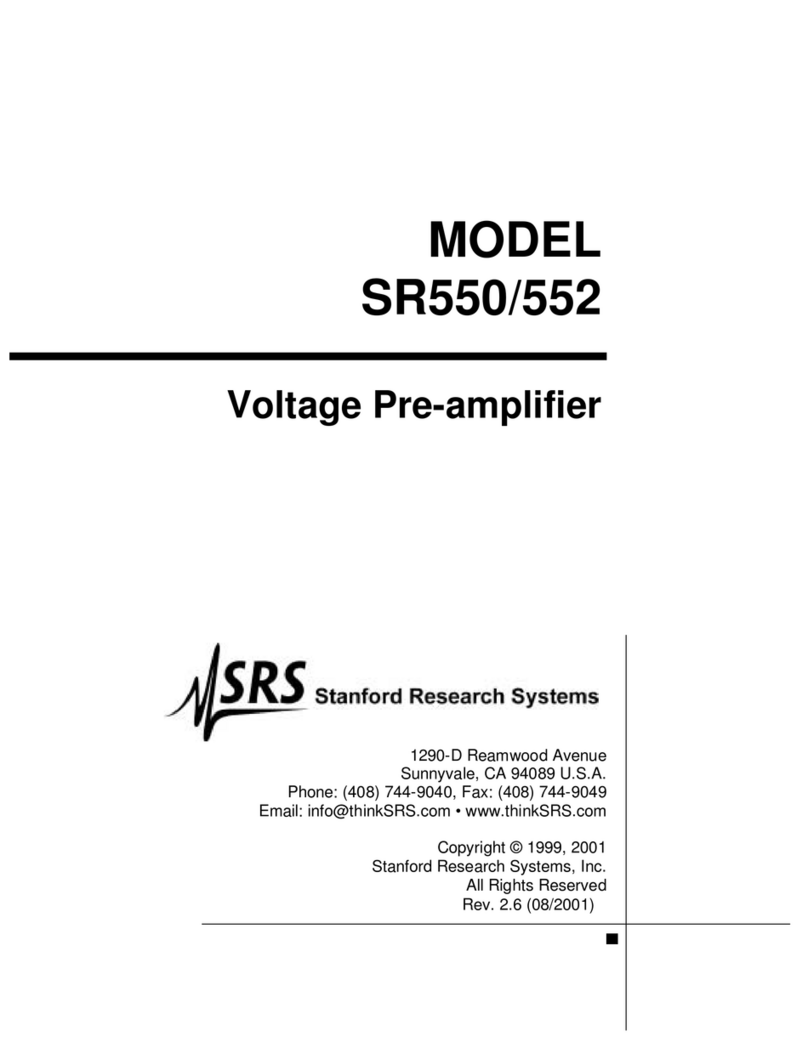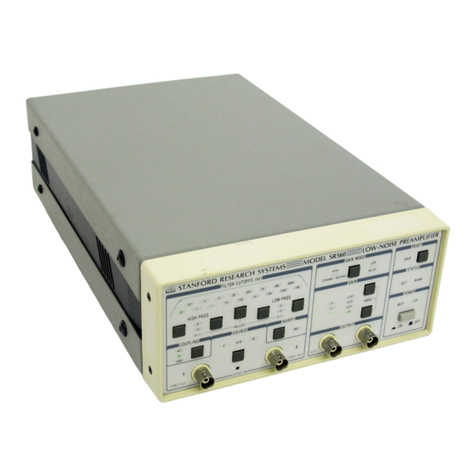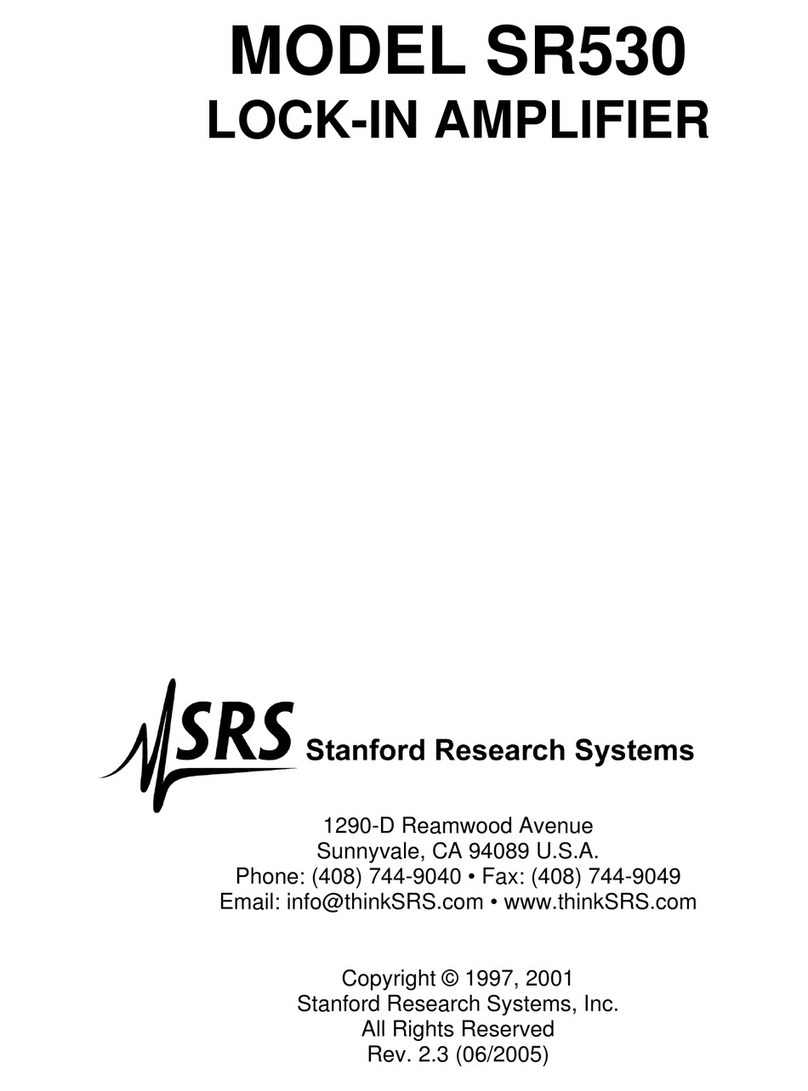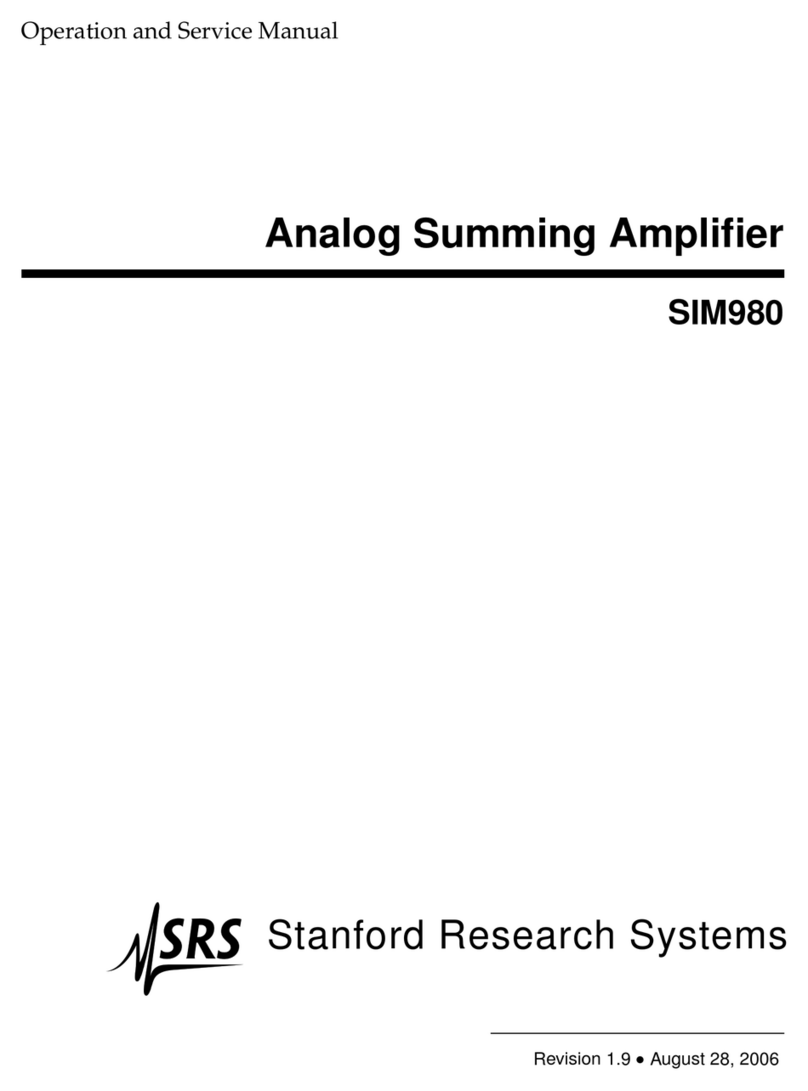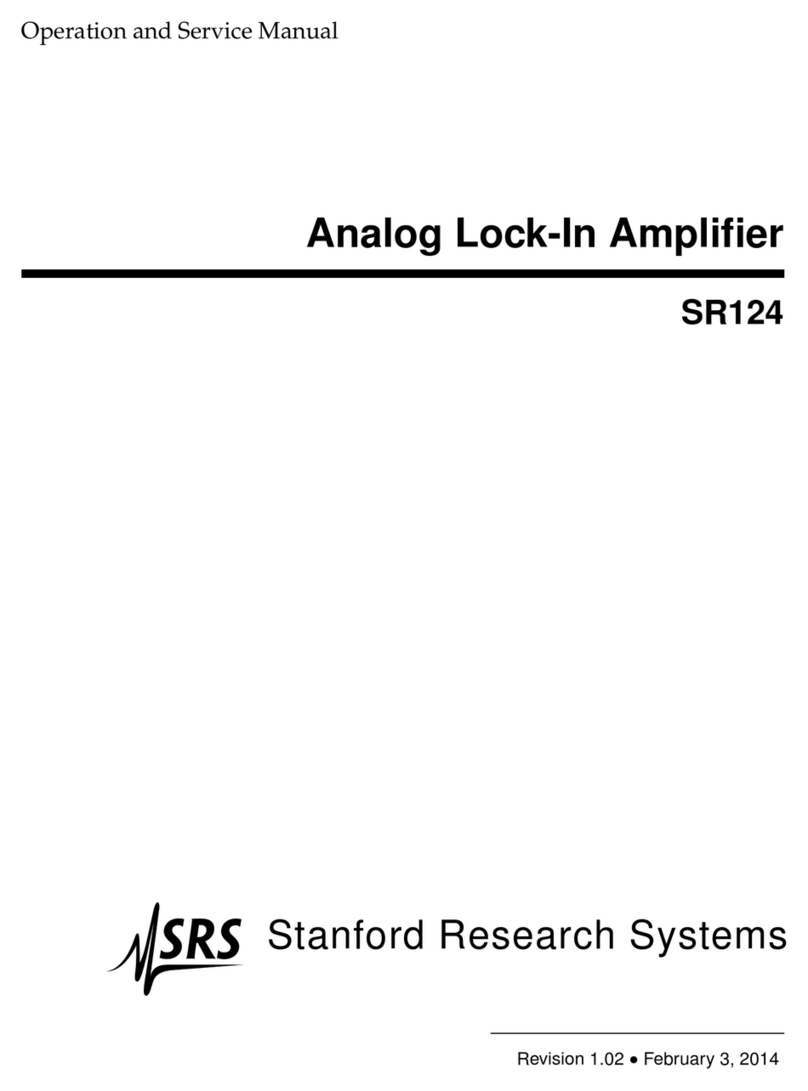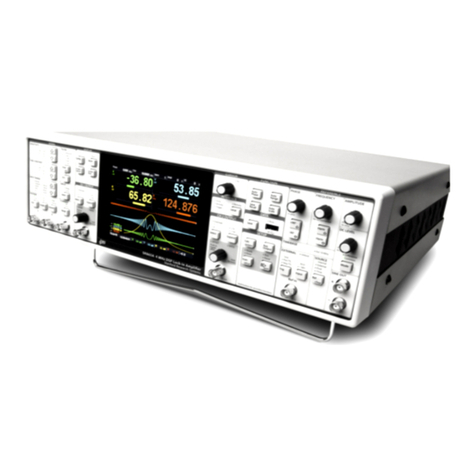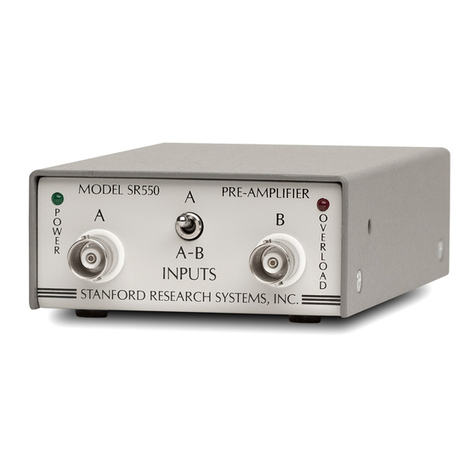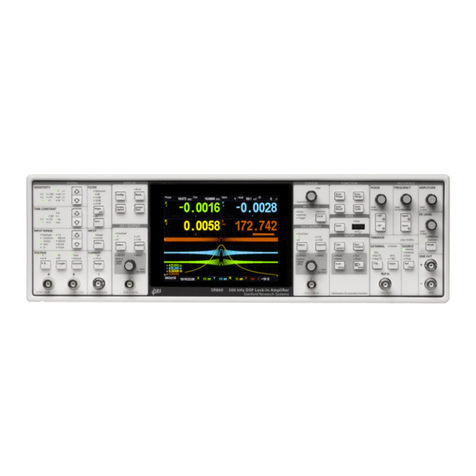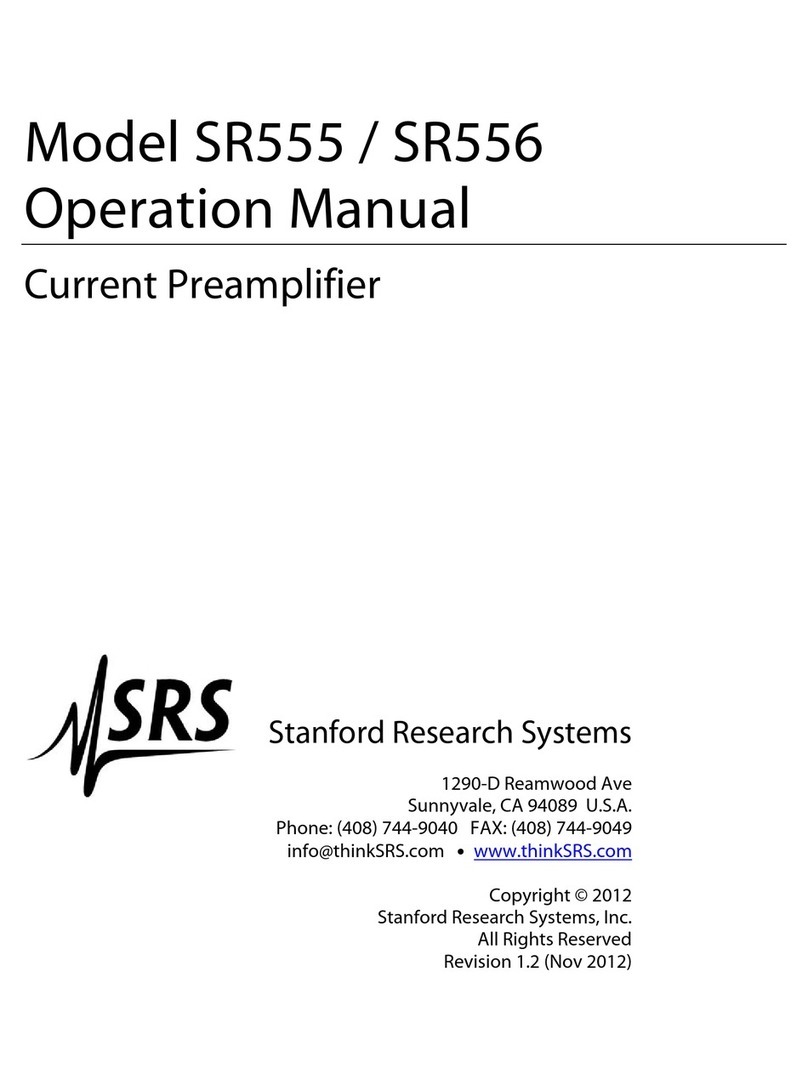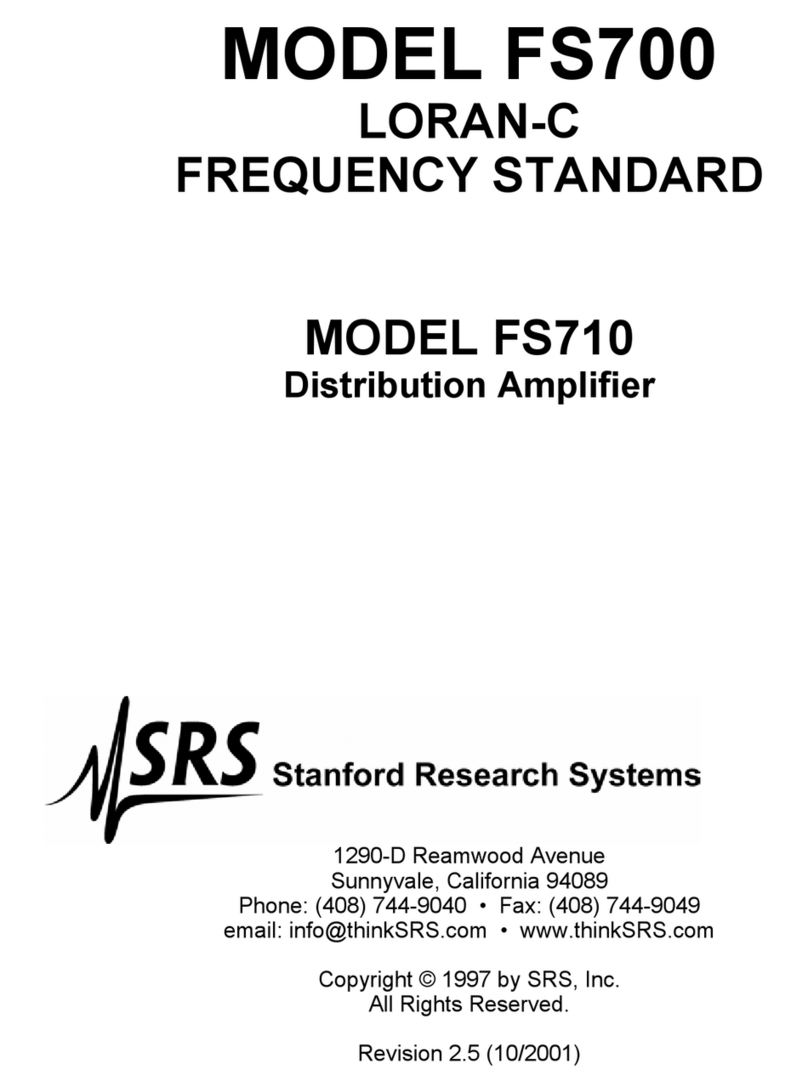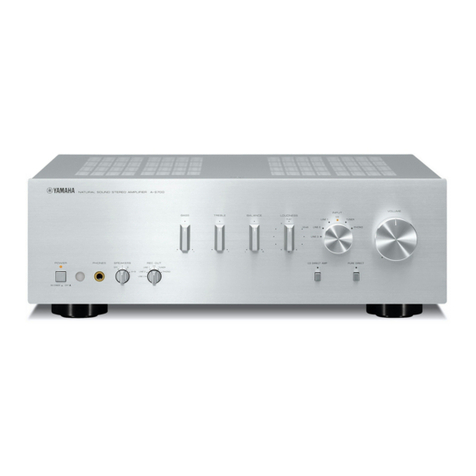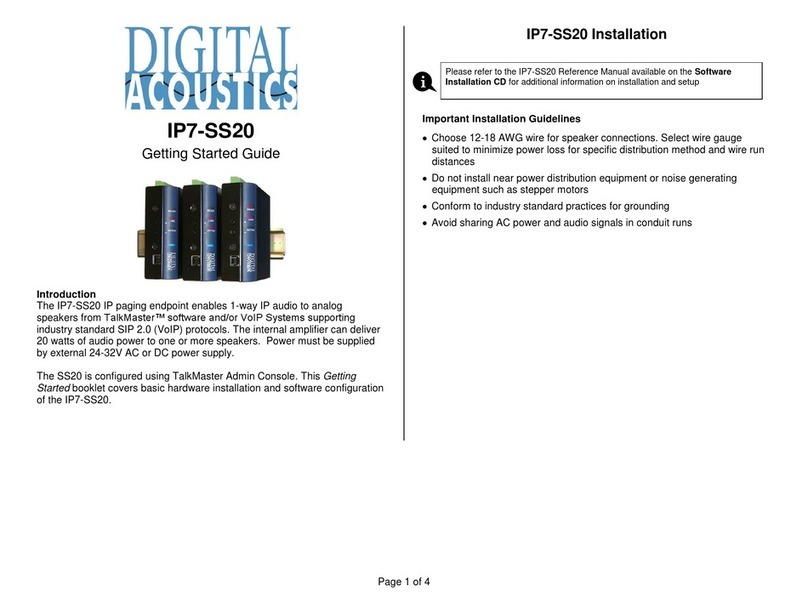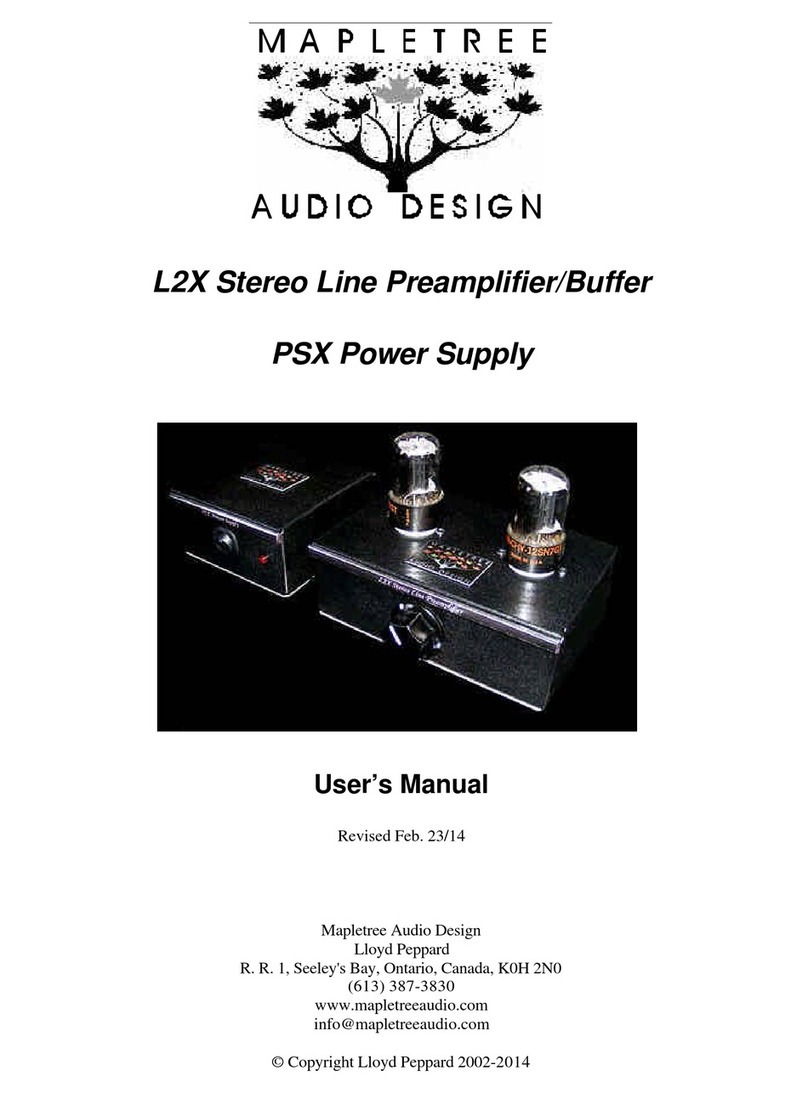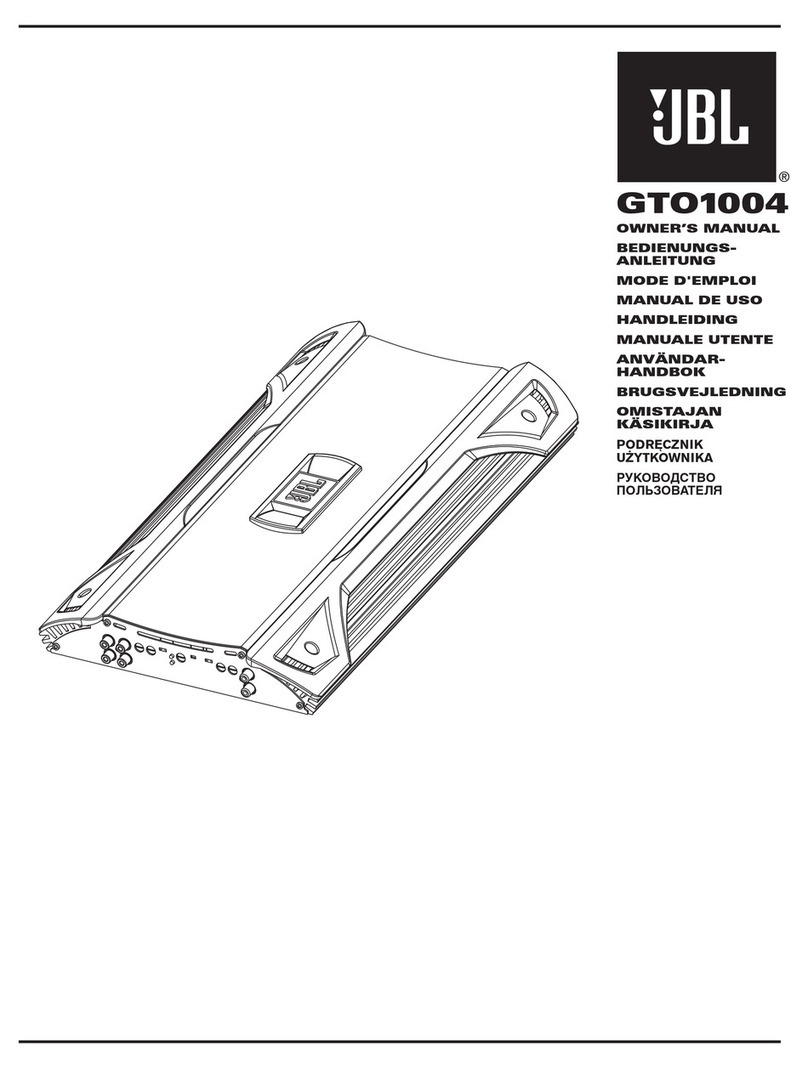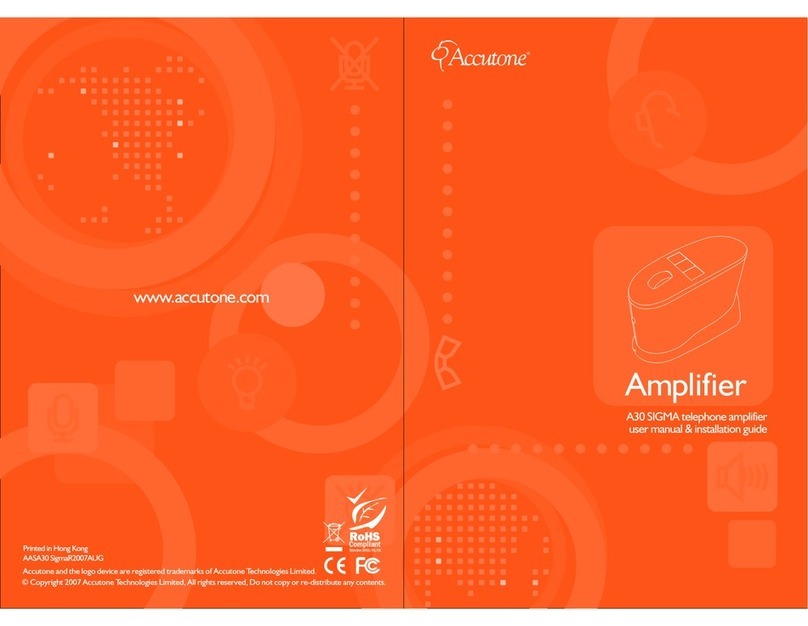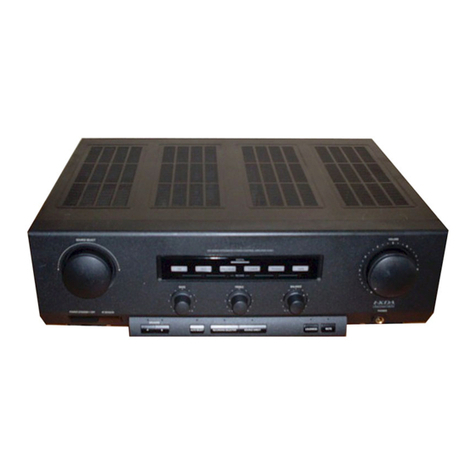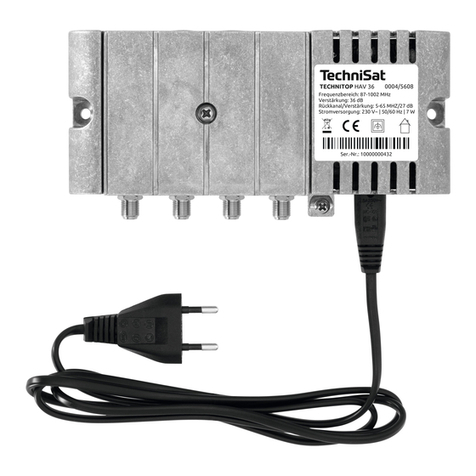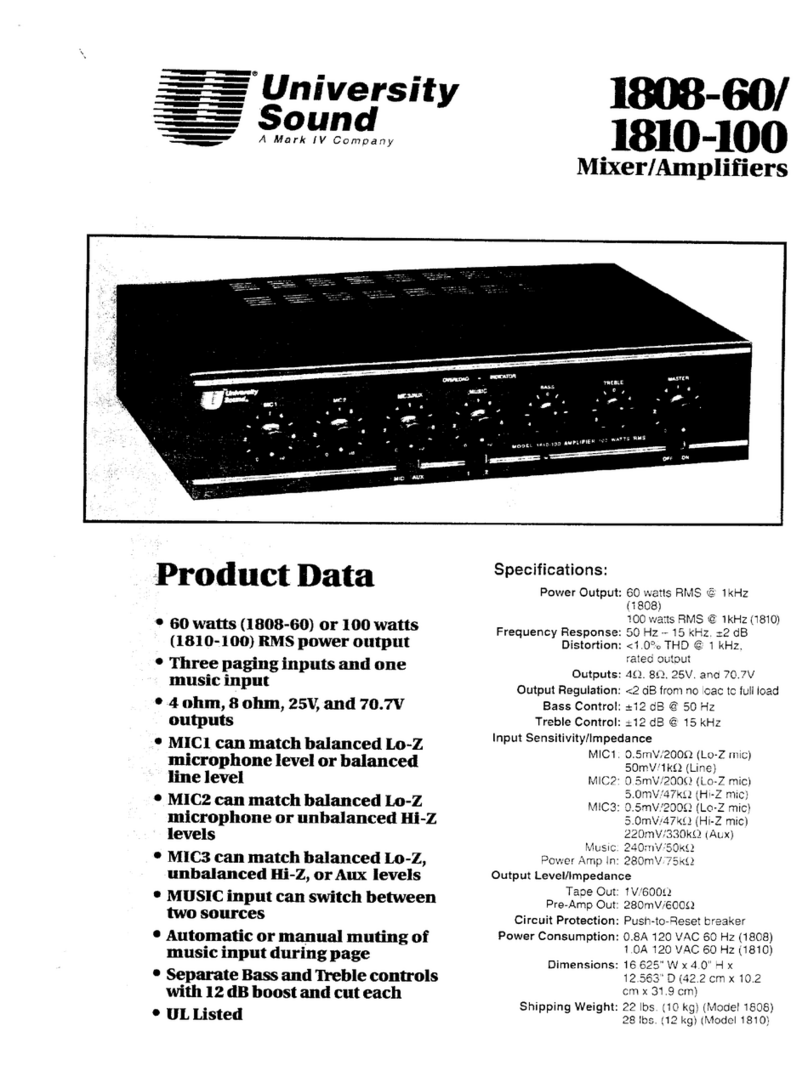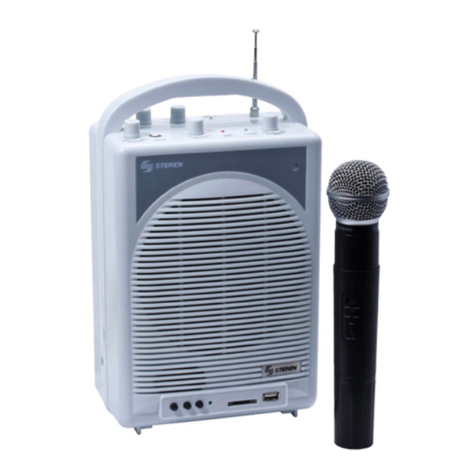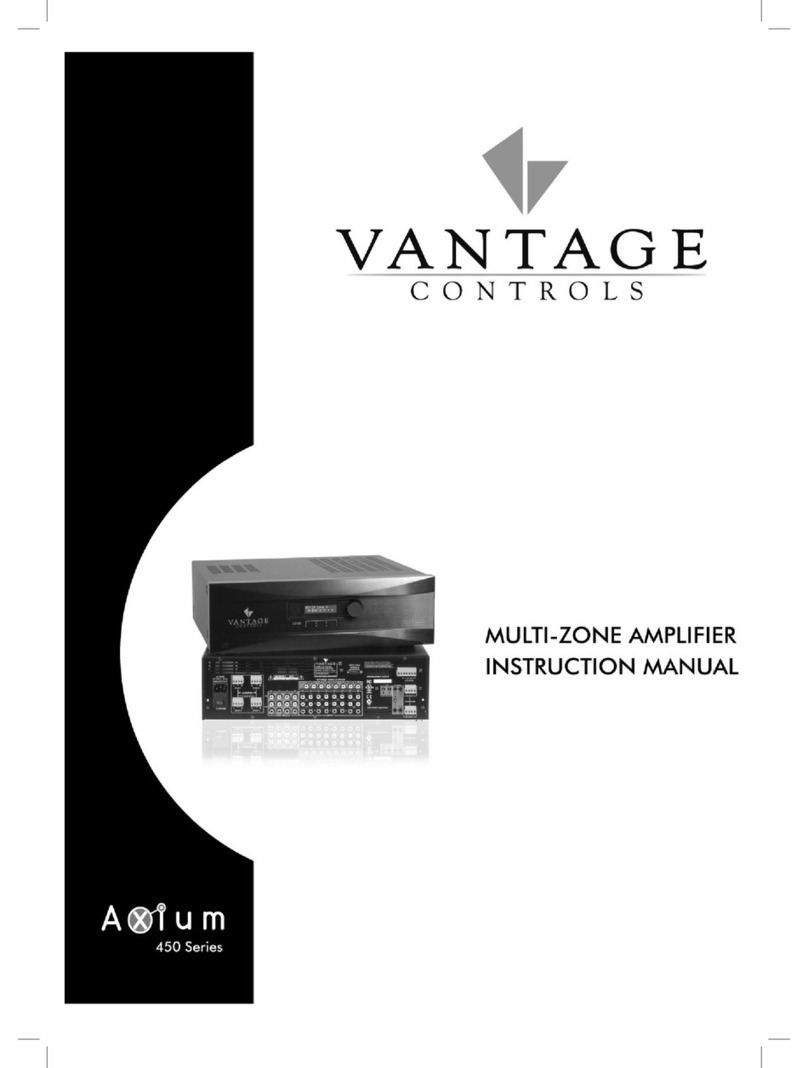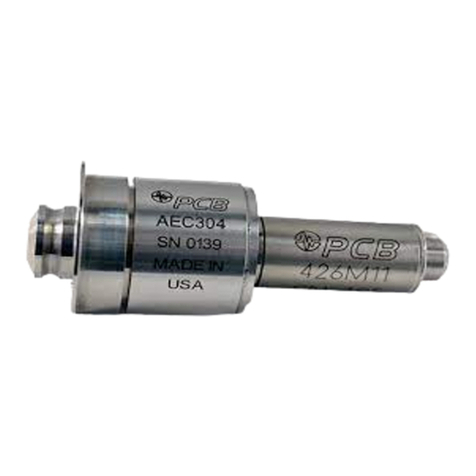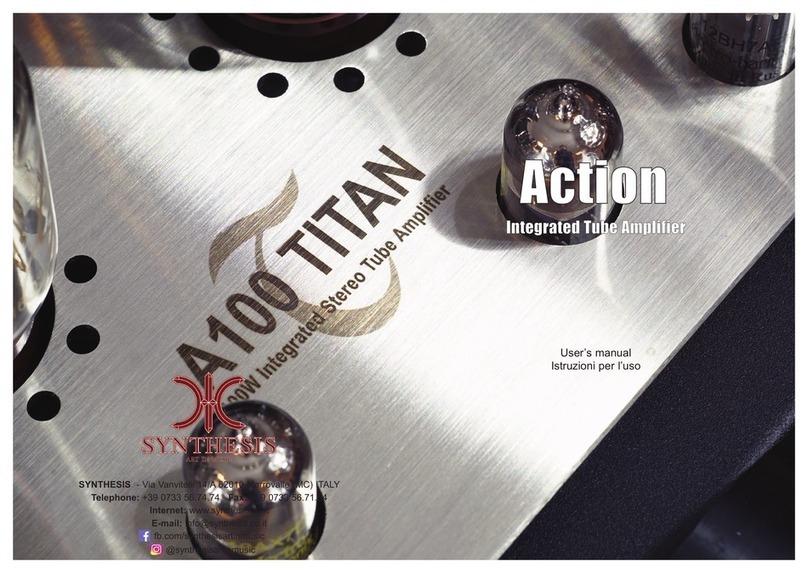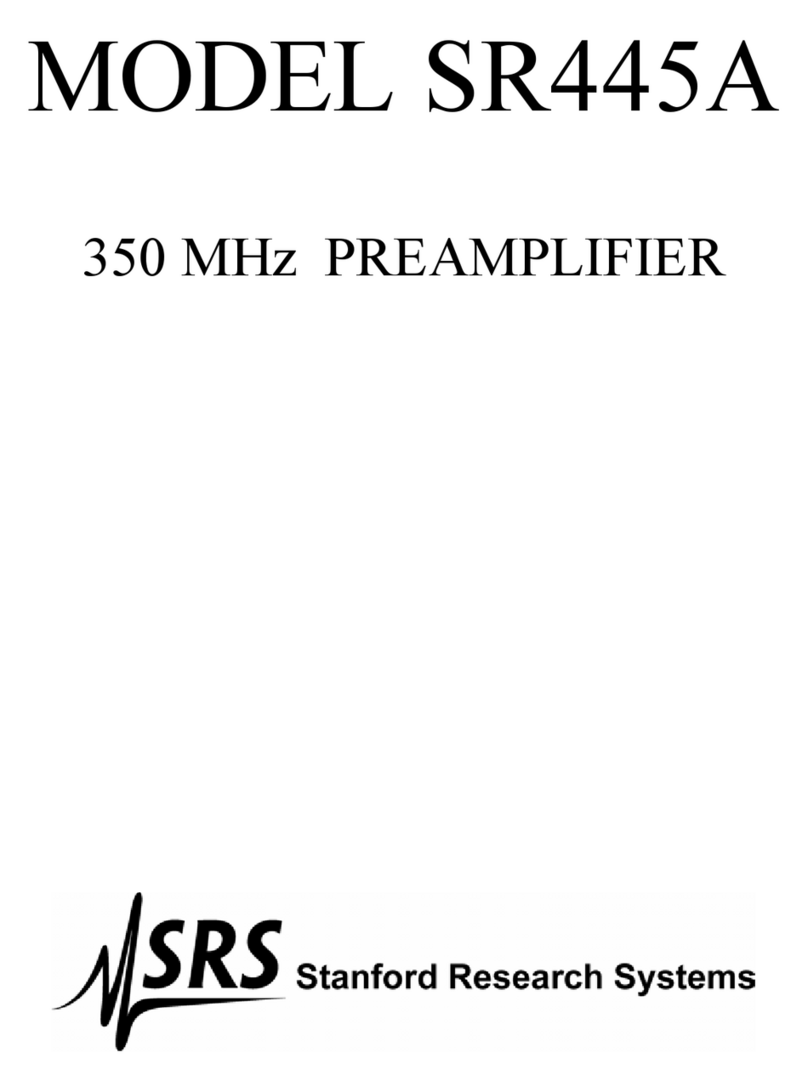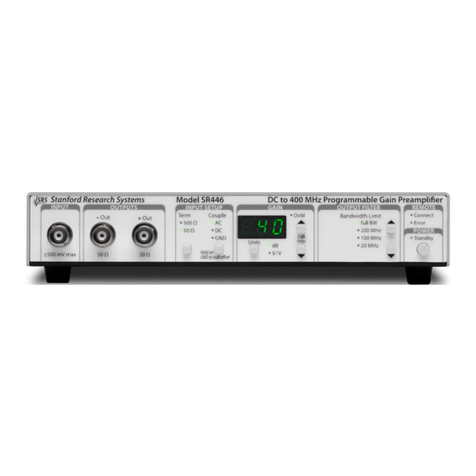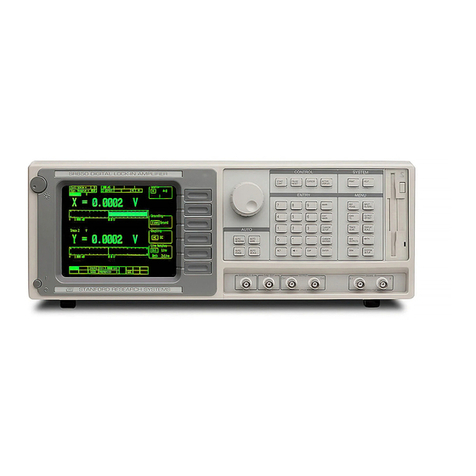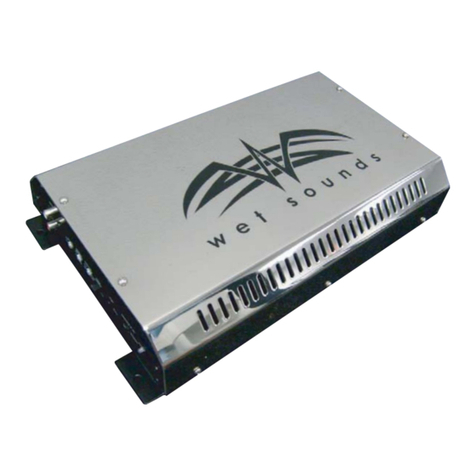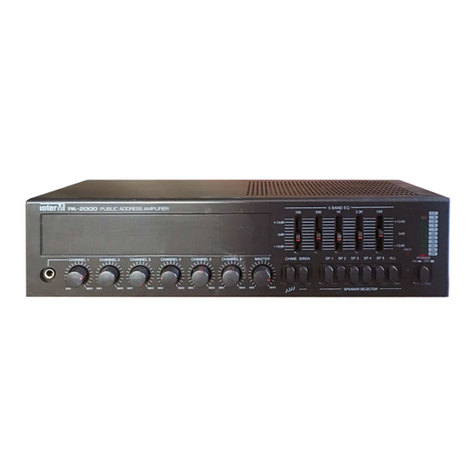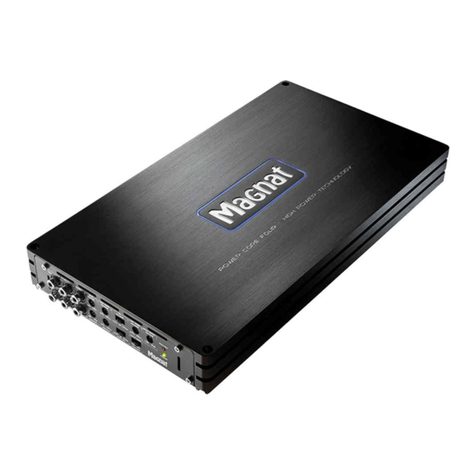
SR830 DSP Lock-In Amplifier
1-7
COMMAND LIST
VARIABLES i,j,k,l,m Integers
f Frequency (real)
x,y,z Real Numbers
s String
REFERENCE and PHASE page description
PHAS (?) {x} 5-4 Set (Query) the Phase Shift to x degrees.
FMOD (?) {i} 5-4 Set (Query) the Reference Source to External (0) or Internal (1).
FREQ (?) {f} 5-4 Set (Query) the Reference Frequency to f Hz.Set only in Internal reference mode.
RSLP (?) {i} 5-4 Set (Query) the External Reference Slope to Sine(0), TTL Rising (1), or TTL Falling (2).
HARM (?) {i} 5-4 Set (Query) the Detection Harmonic to 1 ≤i ≤19999 and i•f ≤102 kHz.
SLVL (?) {x} 5-4 Set (Query) the Sine Output Amplitude to x Vrms. 0.004 ≤x ≤5.000.
INPUT and FILTER page description
ISRC (?) {i} 5-5 Set (Query) the Input Configuration to A (0), A-B (1) , I (1 MΩ) (2) or I (100 MΩ) (3).
IGND (?) {i} 5-5 Set (Query) the Input Shield Grounding to Float (0) or Ground (1).
ICPL (?) {i} 5-5 Set (Query) the Input Coupling to AC (0) or DC (1).
ILIN (?) {i} 5-5 Set (Query) the Line Notch Filters to Out (0), Line In (1) , 2xLine In (2), or Both In (3).
GAIN and TIME CONSTANT page description
SENS (?) {i} 5-6 Set (Query) the Sensitivity to 2 nV (0) through 1 V (26) rms full scale.
RMOD (?) {i} 5-6 Set (Query) the Dynamic Reserve Mode to HighReserve (0), Normal (1), or Low Noise (2).
OFLT (?) {i} 5-6 Set (Query) the Time Constant to 10 µs (0) through 30 ks (19).
OFSL (?) {i} 5-6 Set (Query) the Low Pass Filter Slope to 6 (0), 12 (1), 18 (2) or 24 (3) dB/oct.
SYNC (?) {i} 5-7 Set (Query) the Synchronous Filter to Off (0) or On below 200 Hz (1).
DISPLAY and OUTPUT page description
DDEF (?) i {, j, k} 5-8 Set (Query) the CH1 or CH2 (i=1,2) display to XY, Rθ, XnYn, Aux 1,3 or Aux 2,4 (j=0..4)
and ratio the display to None, Aux1,3 or Aux 2,4 (k=0,1,2).
FPOP (?) i {, j} 5-8 Set (Query) the CH1 (i=1) or CH2 (i=2) Output Source to X or Y (j=1) or Display (j=0).
OEXP (?) i {, x, j} 5-8 Set (Query) the X, Y, R (i=1,2,3) Offset to x percent ( -105.00 ≤x ≤105.00)
and Expand to 1, 10 or 100 (j=0,1,2).
AOFF i 5-8 Auto Offset X, Y, R (i=1,2,3).
AUX INPUT/OUTPUT page description
OAUX ? i 5-9 Query the value of Aux Input i (1,2,3,4).
AUXV (?) i {, x} 5-9 Set (Query) voltage of Aux Output i (1,2,3,4) to x Volts. -10.500 ≤x ≤10.500.
SETUP page description
OUTX (?) {i} 5-10 Set (Query) the Output Interface to RS232 (0) or GPIB (1).
OVRM (?) {i} 5-10 Set (Query) the GPIB Overide Remote state to Off (0) or On (1).
KCLK (?) {i} 5-10 Set (Query) the Key Click to Off (0) or On (1).
ALRM (?) {i} 5-10 Set (Query) the Alarms to Off (0) or On (1).
SSET i 5-10 Save current setup to setting buffer i (1≤i≤9).
RSET i 5-10 Recall current setup from setting buffer i (1≤i≤9).
AUTO FUNCTIONS page description
AGAN 5-11 Auto Gain function. Same as pressing the [AUTO GAIN] key.
ARSV 5-11 Auto Reserve function. Same as pressing the [AUTO RESERVE] key.
APHS 5-11 Auto Phase function. Same as pressing the [AUTO PHASE] key.
AOFF i 5-11 Auto Offset X,Y or R (i=1,2,3).




















